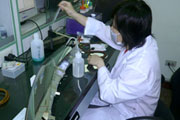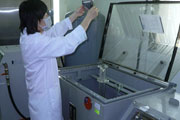ASTM and JIS Certified Electroplating Services
Electroplating Services for Over 43 Years - CYH
Plating thickness, CASS, thermal cycle test, stone chip test are conducted at CYH's inspection test center.
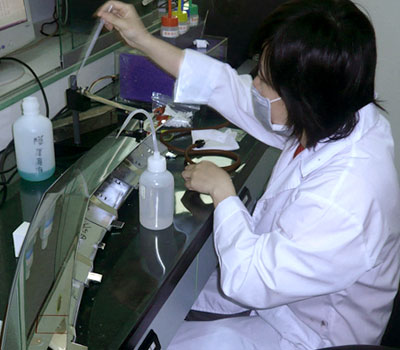
One of the prime industrial plating manufacturers in Taiwan with advanced electroplating equipment - CYH
Cherng Yi Hsing Plastic Plating Factory CO., LTD. (CYH) is a nickel and chrome industrial plating expert with over 43 years of experience. There are three facilities with total size of 15,200 sq-ft and 22,000 sq-ft warehouse located in the U.S. that plays an important role communicating with manufacturers and managing inventory to ensure client's great satisfactory. With all 160 employees working in Taiwan, all products are shipped in-time.
-
Certifications:
- IEC 17025 - TAF Lab Approval, ASTM, JIS, IMDS, GMW, ISO/TS 16949, ISO 9001, ROHS and Dunn & Bradstreet.
-
Test in IEC 17025 - TAF Inspection Room Approval:
- Chrome Electroplating Thickness Test
- CASS Test
- Thermal Test
- Stone Chip Test (Gravelometer)
- Sulfate Test Machine
- Painting Adhesion Test by Cross Hatch Test
-
CYH Motorcycle Parts Chrome Electroplating Tank Sizes:
- Plant #1 Cherng Min Aftermarket: 330*80*205cm (130”*31.5”*80.7”)
- Plant #2 Sherng Yi Hsing Aftermarket: 330*75*180cm (130”*29.5”*70.8”)
- Plant #3 Cherng Yi Hsing OEM Parts: 330*85*230cm (130”*33.5”*90.5”)
Contact CYH for Auto Parts Electroplating Services
The Process of Industrial Plating
1. Loading Plating Items to Titanium Plating Racks
After plastic injection is done, the auto accessories are moved using special equipment that ensures every piece is unharmed while transfering to the electroplating line. At plating line, staff clip the auto accessories onto the titanium plating racks.
Racks for plating are usually made of titanium for long life; their accurate and precise electroplating due to its minor affection by plating fluid such as copper, nickel and chrome.

Preparation of work surface
2. Chemical Etching (Etch in chromic acid based solution to promote adhesion):
The whole process time depends on the plastic, desired thickness, surface area, and number of samples to be deposited. In the pickling and activation of plastic surfaces with a chromo-sulfuric acid bath containing a noble metal chloride, the bath is boiled prior to use for a period of time sufficient to eliminate substantially all free chlorine present. Thereafter the plastic surface is pickled and activated in the bath, and then chemical metal plated.
3. Acid Cleaning: roughening solution for plastic
Preparation of Work Surface
The most important step in the entire electroplating operation is the surface preparation of injected production and the cleaning process. This is because the appearance and acceptance of the article depend primarily on a sound finish achieved with a clean and active substrate. Likewise, improper cleaning process leads to rejects and decreased profitability. Before the desired coating can be applied to the component, the surface to be plated should be clean and free of all "foreign" matters like heavy scale of oxide films, rust, workshop soils & oils, grease, dirt, and any other material. All these should be removed to ensure strong adherence of electrodeposited piece.
This process is performed on the metal surface prior to electroplating. It is more efficient than soak cleaning and considerably minimizes chemical attack on the metal surface. The component becomes the cathode (direct cleaning) or anode (reverse cleaning) or alternately the cathode and anode in an alkaline solution.
Etched parts require neutralization. Even when excellent rinsing conditions exist, Cr 6+ can be trapped in etch cavities or other tight spaces. This leads to a defect known as "skip plate". Sodium bisulfite is a commonly used neutralizer. The bath is changed frequently due to its important function and the low cost involved.
4. Electroless Plating - Copper Electroplating:
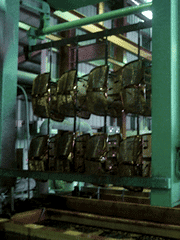
Before the injected product started to electroplate, improper or defective ones will be remove at this stage. Parts to be electro-plated are loaded onto a rack with electrical clips. The plating rack is connected to power source to drive the plating process with electrical current. The electro-plating line consists of a series of tanks where the parts are immersed to apply Copper, and Nickel and Trivalent Chrome where decorative finish is required. Engineers work with the customer to define the plating thickness to meet the customer requirements.
The electroplating with the great improvements in technology of electroless nickel and electroless copper deposition combines with the development of the etching technique that provides a highly conductive coating exhibiting satisfactory adhesion to the plastics surface.
The purpose of the copper strike is to build up sufficient copper thickness (0.0001inch) to prevent loss of electrical contact to the rack. A bright acid copper bath builds a thickness of about 0.0005 to 0.001 inch of bright copper. This ductile copper prevents blisters and cracks and levels any small cosmetic defects to prepare the surface for subsequent satin nickel plating.
5. Electroless Plating - Nickel Electroplating:
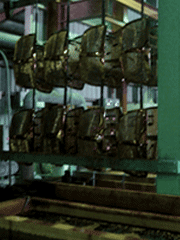
Nickel electroplating is a process of nickel deposition on a part, immersed into an electrolyte solution and used as a cathode, when the nickel anode is being dissolved into the electrolyte in form of the nickel ions, traveling through the solution and depositing on the cathode surface. The coating thickness's measurement is µm.
As a corrosion inhibitor, nickel is used to protect iron, copper, or zinc alloys against corrosive attack in rural, industrial or marine atmospheres depending upon the thickness of the nickel deposit.
Nickel, with its leveling and pore-filling characteristic, is also an excellent undercoat for the precious metals by reducing the total amount of the precious metal required to achieve performance specifications electroless nickel plating.
6. Electroplating - Chrome Electroplating:
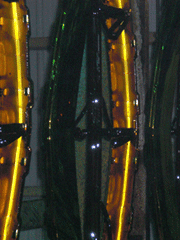
Chrome electroplating is the main process of the whole electroplating procedure. Chrome plating, the final plating step, is actually a protective coating over the shiny nickel which prevents the nickel from tarnishing. The chrome plating bath contains chromic acid/sulphuric acid and like most transition metals, can exist in a number of oxidation states. Temperature is critical for good (or any) results. It is the best to maintain the temperature automatically by using a thermostatically controlled electric heater right in the bath in order to control the temperature range throughout plating times.
For chrome plating direct current is required, strictly. The reason is that chromic acid has a strong etching action on most metals when no current is flowing and chrome is deposited on the work-piece only when current is flowing. The amount of chromic acid mist generated depends on several variables such as part loading, time, current density and concentration. Finally, a layer of electrolytic chromium is plated over the satin nickel to improve the nickel's durability. This layer is often 5-10 inch thick, and both hexavalent and trivalent chromium baths are used.
Contact CYH for Auto Parts Electroplating Services
In 2011, satin chrome line and finish production line was added to provide various surface options. So far, there are "Bright" chrome line and finish, "Satin" chrome line and finish, and "Dark"-Tri Chrome line & finish.
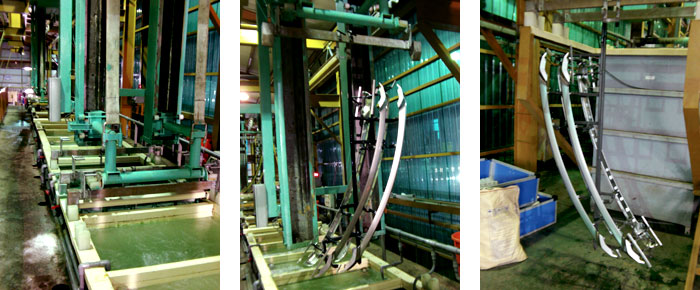
7. Unloading Auto Accessories From Titanium Plating Racks:
After 4 hours of plating process, the desired chrome auto accessories are unloaded and visual inspected strictly. Any imperfect auto accessories are removed immediately.

8. Inspection and QC (Quality Control):
Inspection:
For the first check up, auto accessories are shifted to the test room, a ISO/ IEC 17025 - TAF certified labortory for various of examinations. The main examine items are auto accessory's plating thickness, CASS, thermal test and stone chip test, etc.
a). Plating Thickness Test:
Plated thickness is critical to performance parameters such as durability, conductivity, hardness and lubricity. Auto accessories are examined using chemicals to test out the plating thicknesses and ensure their thicknesses meet the standards.
b). Corrosion test:
The CASS test (Copper Accelerated Acetic Acid Salt Spray) is now widely used for the testing of decorative nickel/chrome electroplated deposits. The demand for corrosion performance from automotive decorative chromium components is the most influential element. Therefore CASS test was developed for corrosion testing of copper-nickel-chromium electroplatings on plastics and it is generally been characterized by the extended CASS test requirement in automotive standards. CASS test performance is strongly linked to microporosity, among other deposit attributes.
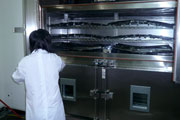
c). Thermal Cycle Test (Cold, Hot Test):
Thermal Cycle Tester is used to thermally cycle products between hot and cold temperatures for accelerated durability tests. Components tested are automotive and aerospace heat exchangers and components, hardware and metering products.
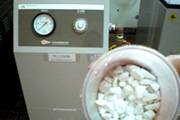
 d). Stone Chip Test (Gravelometer):
d). Stone Chip Test (Gravelometer):
Stone Chip Test (Gravelometer) is conducted to evaluate the durability of electroplated products. Gravelometers and their usage for testing the adhesion and chip stone resistance of coatings are generally well known.
The gravelometer is designed to evaluate the resistance of surface coatings (paint, clear coats, metallic plating, electroplating, etc.) to chipping caused by the impacts of gravel or other flying objects.
Chromium electroplated auto accessory is tested using gravelometer test machine for its impact resistance.
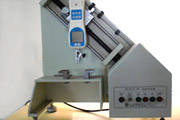
e). Peel Test (Adhesion Test):
The qualities of plastic for electroplating led to major advances in the technology, therefore peel test machine is essential for examining the adhesion of electroplated layer. This peel test method may be used to establish whether the adhesion of a coating to a substrate is within a required range (between a quantified low and a quantified high level). Determination of actual adhesive forces requires more sophisticated methods of measurement. During the test, 3M tape is utilized as well.
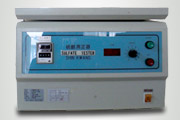
f). Sulfate Test:
In automotive electroplating where corrosion resistance is important, the copper will seal the surface while the nickel will provides the corrosion resistance. When testing the corrosion resistance on entire electroplated plastic surface, the fluid is 10% of magnesium sulfate solution and 60 degree.
g). Painting Adhesion Test by Cross Hatch Test:
Painting Adhesion Test by Cross Hatch Test is a test for its adhesion of plated products also it checks to make sure that the plated object has no blisters on the cross hatched part. The freshly cured paint will frequently do better on flexibility and adhesion tests than when allowed to age.
The electroplated objects are examined strictly, and packed with layers of packing materials to ensure they are not damaged when arriving.
Contact CYH for Auto Parts Electroplating Services
![]() Cherng Yi Hsing (CYH)'s three rigorous inspections meet your high standards.
Cherng Yi Hsing (CYH)'s three rigorous inspections meet your high standards.
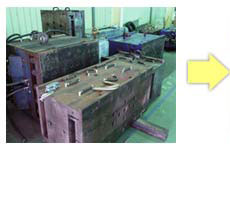
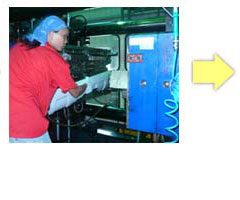
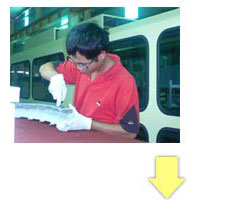
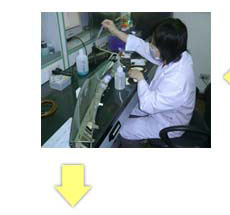
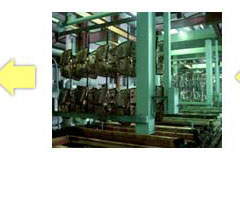
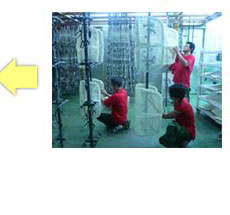
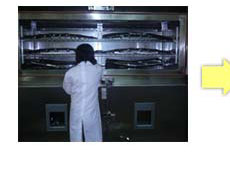
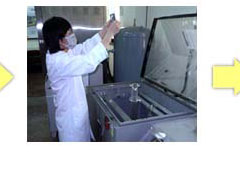
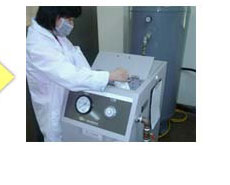
Flowchart of One-Stop Electroplating Supplies - Cherng Yi Hsing Plastic Plating Factory CO., LTD. (CYH)
Product Category
Search Related Products
